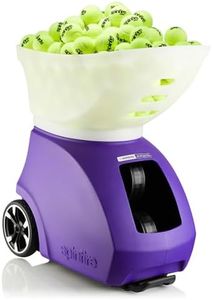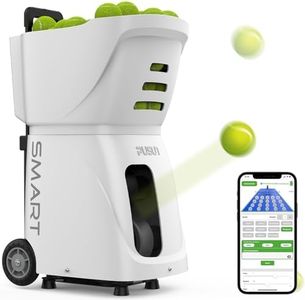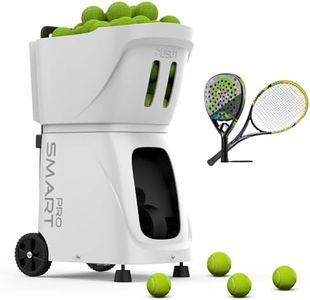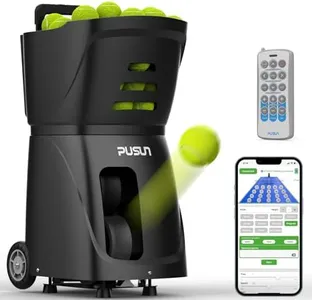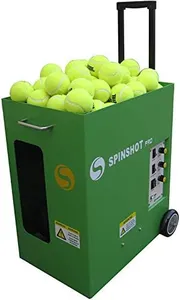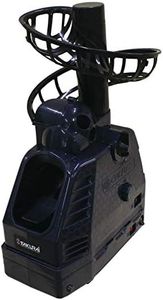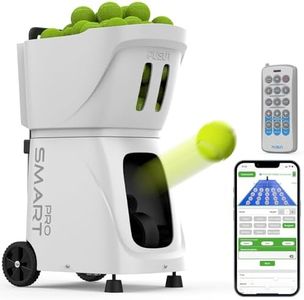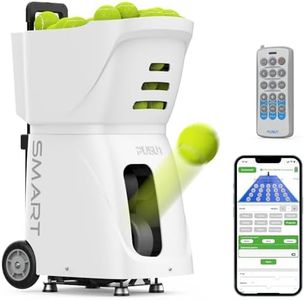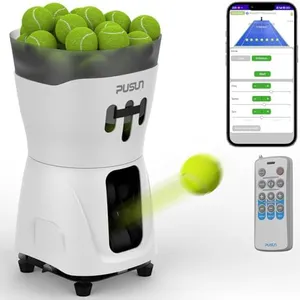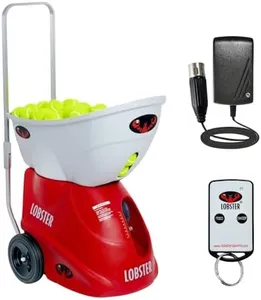We Use CookiesWe use cookies to enhance the security, performance,
functionality and for analytical and promotional activities. By continuing to browse this site you
are agreeing to our privacy policy
10 Best Tennis Ball Machines
From leading brands and best sellers available on the web.Buying Guide for the Best Tennis Ball Machines
Choosing a tennis ball machine can dramatically improve your practice routine, allowing you to train on your own with consistent feeds and tailored drills. The key to making a great choice is identifying your own level, goals, and the types of practice sessions you plan to have, since machines come with a variety of features that can serve beginners, intermediate, and advanced players differently. Take into account not just your current ability, but how much you want to challenge yourself or progress over time.Ball CapacityBall capacity refers to how many tennis balls the machine can hold at once. This is important because it determines how long you can practice before pausing to refill. Machines are typically divided into those that hold under 70 balls (best for short solo drills or youth training), mid-range capacity (70-150 balls, which is enough for most recreational players and group work), and large capacity (over 150 balls, suited for intensive sessions or coaching scenarios). Choose a capacity based on how uninterrupted you want your session to be and whether you'll be picking up balls solo or with help.
OscillationOscillation is the machine’s ability to move side-to-side, changing the direction of the ball, which helps you practice footwork and simulate real play. Some machines have no oscillation, feeding balls in the same spot (useful for beginners focusing on form), some offer random left-right oscillation (for advanced footwork and consistency drills), and others have full random oscillation including vertical movement (useful for experienced players ready to simulate various game conditions). Consider how much movement and unpredictability you want in your practice when looking at this feature.
Speed and Spin ControlSpeed and spin control tells you how fast the balls are shot out and whether you can adjust topspin or backspin. Low speed and spin is ideal for beginners or for basic warm-ups, while mid-range options cater to most club players wanting to replicate typical rally speeds. High speed and variable spin settings challenge advanced players who want to recreate match scenarios and improve reaction time. Pick the range that matches your current level and allows room to grow.
Power SourceTennis ball machines are powered either by rechargeable batteries or require to be plugged into an outlet. Battery-powered models offer great portability and are excellent if you practice on courts without nearby power sources, but their runtime is limited (generally 1-4 hours). Plug-in models can run endlessly but require a power source nearby. If you often play at parks or public courts, battery models are better; if your court has an outlet or you want marathon sessions, consider plug-in.
Portability and WeightPortability is about how easy it is to move the machine from place to place. Lightweight and compact machines are easier for solo players to load into a car or roll to a court, but may lack advanced features or capacity. Heavier machines might need two people or a trolley to move, but offer more stability and features. Match the machine’s weight and handles/wheels with your own transport and storage situation.
Programmability and DrillsSome tennis ball machines allow you to program specific patterns or drills, such as alternating deep and short balls, or random ball placement. Basic machines may just offer straightforward, repetitive feeds. Semi-programmable machines provide pre-set drills, while fully programmable models let you design complex routines. If you prefer simple repetitive drills, basic models suffice; if you want to mimic real match scenarios or target varied weaknesses, look for programmable features.
